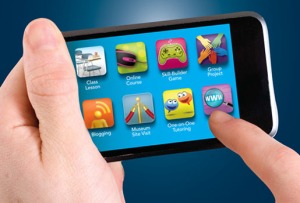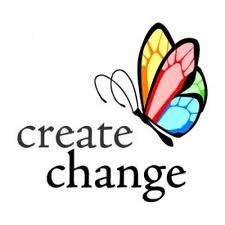 Think of technology as the water that fills in the shapes of our imaginations. Technology use planning is about shaping a vision and leveraging innovation to make it happen. At worse, these plans are a narrow in overview, outlining types or a number of gadgets that should be acquired by a school or district. At best, it is both a plan and a process (Anderson)–a process that harnesses ideas into a collective consciousness and exemplifies problem solving with innovation.
Think of technology as the water that fills in the shapes of our imaginations. Technology use planning is about shaping a vision and leveraging innovation to make it happen. At worse, these plans are a narrow in overview, outlining types or a number of gadgets that should be acquired by a school or district. At best, it is both a plan and a process (Anderson)–a process that harnesses ideas into a collective consciousness and exemplifies problem solving with innovation.
John See, author of the article “Developing Effective Technology Plans,” argues that technology plans should not cover the scope of more than one year. On one hand, See makes his case by pointing out that in a year from now we don’t know what technologies will exist. On the other hand, Mr. See also says “effective plans focus on application, not technology.” If this is true, then application objectives should drive vision and not the other way around. If a technology plan attempts to tackle some of the more serious weakness in the educational system as outlined in initiatives like Race to the Top, I would argue, planning less than year is hardly adequate time to adopt and evaluate worthwhile innovations.
To illustrate, last year our district implemented the Georgia RESA Assessment of Student Progress, or GRASP testing, intended to progress monitor students in basic reading and math skills k-12. This year, GRASP is no where on the district agenda. For a success of a year-to-year data collection program to be measured or beneficial it must be maintained, analyzed, and evaluated over the course of several years. When the use of such a tool isn’t mandated, and teachers don’t know how to access or use the information, the tool becomes virtually useless.
The downfall in a technology use plans is a plan that focuses on adoption rather than implementation and evaluation. Before implementation we must ask what practice are we trying to improve? How will this technology support that goal? What benchmarks will we use to determine the success of an adoption? And perhaps most importantly, how will the adoption of this technology will improve learning? If I’m using a computer projector in my class in the same way I used an old school light projector, what’s changed? Nothing. If I’m using clickers to speed up grading but not adapting my instruction based on what I’ve learned, again, nothing has changed.
 In my school we have adopted web programs, typing equipment, computer projectors, Promethean boards, headphones, and camera equipment many of which are infrequently used to maximize learning. Reasons range from lack of training, fear of equipment, fear of equipment breaking, or in some cases, teachers not even knowing they are there. This year’s adoption was Neo keyboards. Currently, four of five grade level sets sit gathering dust. Who ordered them? What was their intended purpose? How do we use them?
In my school we have adopted web programs, typing equipment, computer projectors, Promethean boards, headphones, and camera equipment many of which are infrequently used to maximize learning. Reasons range from lack of training, fear of equipment, fear of equipment breaking, or in some cases, teachers not even knowing they are there. This year’s adoption was Neo keyboards. Currently, four of five grade level sets sit gathering dust. Who ordered them? What was their intended purpose? How do we use them?
New technology trainings focus on the bells and the whistles of the equipment. Yet we tend to miss the essential question. How are we improving the way we teach and the way students learn? If we don’t follow up to find out how teachers and students are answering this question then, I argue, money spent on new equipment is not money spent wisely.
When I started teaching four years ago, what stood out to me was how dated information management systems were compared to every other field I’d worked in. Even at the auto repair shop, I could look up the history of a vehicle to see every oil change, every diagnosis, quote, test-drives notes, and replaced part by brand and model with the click of a few buttons. But the information on my kids was more elusive. What did an 86% in math tell me about someones needs? I wanted concrete information on what my students already knew and what they needed. Who were they as learners? What strategies maximize their learning in the past and which ones didn’t?
 I also wondered how we could leverage resources. How could new teachers tap into the collective intelligence of the greatest teachers from the past? How would a seasoned professional solve the challenges that I faced as a novice? And still further, I wanted to know how I could personalize learning for students. How could I tap into their knowledge base and inspire them to build on what they already knew? These are still fundamental questions that guide my interest as an educator. My vision for personalized learning in fact, has hardly waivered since my own days as begrudging passive student.
I also wondered how we could leverage resources. How could new teachers tap into the collective intelligence of the greatest teachers from the past? How would a seasoned professional solve the challenges that I faced as a novice? And still further, I wanted to know how I could personalize learning for students. How could I tap into their knowledge base and inspire them to build on what they already knew? These are still fundamental questions that guide my interest as an educator. My vision for personalized learning in fact, has hardly waivered since my own days as begrudging passive student.
My idea of a technology use plan involves finding solutions to these issues that are still of utmost importance. The Department of Educational Technology acknowledged my concerns in the 2010 National Educational Technology Plan. The plan discusses a shift from promotion based on seat time to promotion based on competency. This would mean a shift in grading methodology and would lead to maintenance of more accurate information on individual student needs.
 The document also distinguished the difference between individualized learning, which refers to students learning common information at their own pace, differentiated learning, which addresses different modalities, and the ability to personalize learning which takes into account students prior experience, language, culture, as well as pacing and modality. The success of customized consumer experiences has been demonstrated by companies like Amazon, Pandora, Netflix, and Stitcher radio.
The document also distinguished the difference between individualized learning, which refers to students learning common information at their own pace, differentiated learning, which addresses different modalities, and the ability to personalize learning which takes into account students prior experience, language, culture, as well as pacing and modality. The success of customized consumer experiences has been demonstrated by companies like Amazon, Pandora, Netflix, and Stitcher radio.
The plan goes on to discusses how teachers across the country will share Common Core Standards. This will hopefully lead to a digital warehousing of best practices and expert presenters in core discipline. Not all concepts mentioned in the report were easy a matter of effectively management of information systems however. There also was mention of developing 2.0 assessment, which would include problem solving, critical thinking, and concepts of global participation into student evaluation. The subjective nature of assessing these kinds of skills has always been a challenge, which is why virtually all state tests are fill in the bubble, multiple choice tests. In the past, when faced with the choices of the most effective way or the fastest way to assess students, we’ve opted for speed and efficiency. This leaves me to wonder, when we look back on the transformation of 20th century education system, we will attribute changes to technology use plans and visions of educators, or will simply see disruptive technologies as the butterfly wing that shifted the status quo?
 REFERENCES
REFERENCES
Anderson, S Larry, The Guidebook for Developing an Effective Instructional Technology Plan Version 2.0 prepared by students at students at Mississippi State University, 1996
See, John, The Computing Teacher, Vol.19 Number 8, May 1992.
______. National Education Technology Plan 2010 | U.S. Department of Education, Office of Educational Technology.








